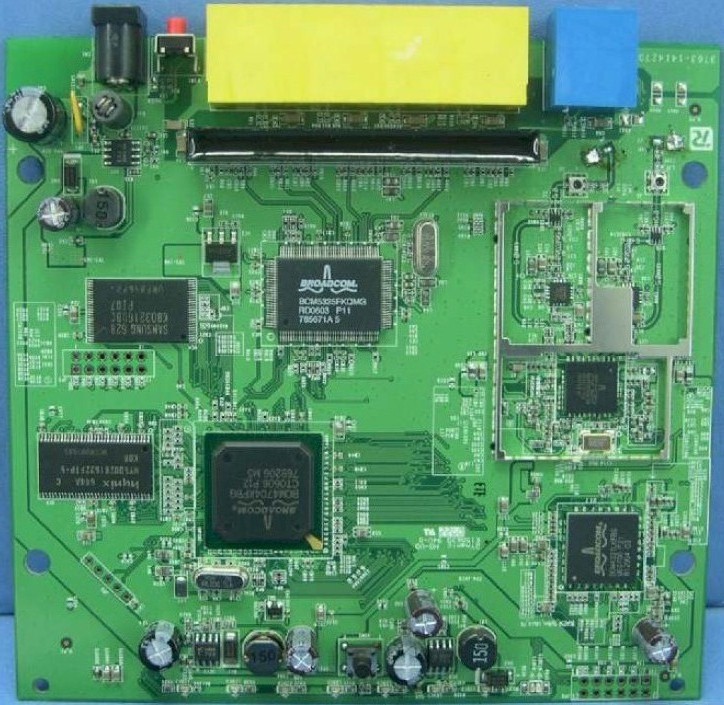After making all that fuss about missing those big boxes with shiny logos, I decided that Kenny deserved his very own piece of flair. Strangely, no one seems to make OpenWRT badges, so I got him the next best thing - a brushed aluminum Tux badge...
Kenny is a six-year-old Linksys WRT150N home wireless router. This particular model, originally released in 2004, is still available
I didn't have the stomach to perform an autopsy myself. Fortunately, I wasn't the first to wonder what might lie beneath that eerily-familiar deep blue plastic shell:
 |
| Photo by Small Net Builder |
One the usual Broadcom chipsets, I presume? Wikipedia and Small Net Builder say:
- CPU: Broadcom BCM4704 chip Rev. 9 @ 266 MHz
- 16 MB RAM
- 4 MB NAND Flash
- 10/100 Ethernet Switch: Broadcom BCM5325
root@kenny:~# dmesg | egrep 'Ethernet|switch'
ssb: Core 1 found: Fast Ethernet (cc 0x806, rev 0x06, vendor 0x4243)
ssb: Core 2 found: Fast Ethernet (cc 0x806, rev 0x06, vendor 0x4243)
eth0: Broadcom 44xx/47xx 10/100BaseT Ethernet 00:1d:7e:43:e1:66
eth1: Broadcom 44xx/47xx 10/100BaseT Ethernet 00:88:88:88:00:2a
roboswitch: Probing device eth0: found a 5325! It's a 5350.
What's this? I have TWO physical network interfaces, with TWO different MAC addresses??? And one of them is attached to a programmable, VLAN-enabled switch? (Forget about the wireless for the time being, the proprietary
wl-mimo driver it needs doesn't work on 2.6 kernels anyway).Oh, it's on now. Two NICs means I can replicate packets without creating loops!!
Here's where the fun starts. After a lot of prodding, Kenny now sees his ports like so:
Next time, I'll tell you how I did it, and why this setup works so much better than earlier attempts. Having that second physical NIC dedicated to the port formerly known as "WAN" is what made it possible to turn Kenny into a full frame aggregating multi-port *layer-2* ethernet SPAN device. :-)



No comments:
Post a Comment